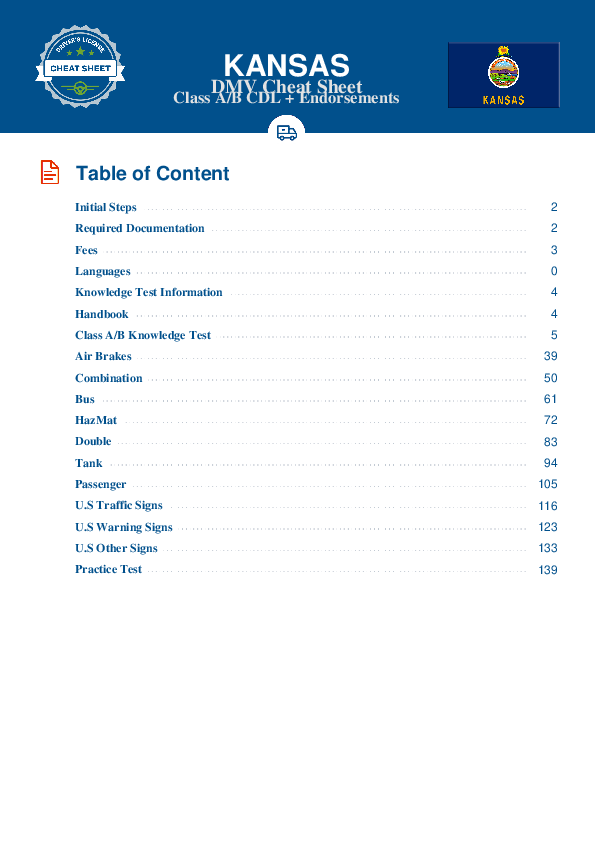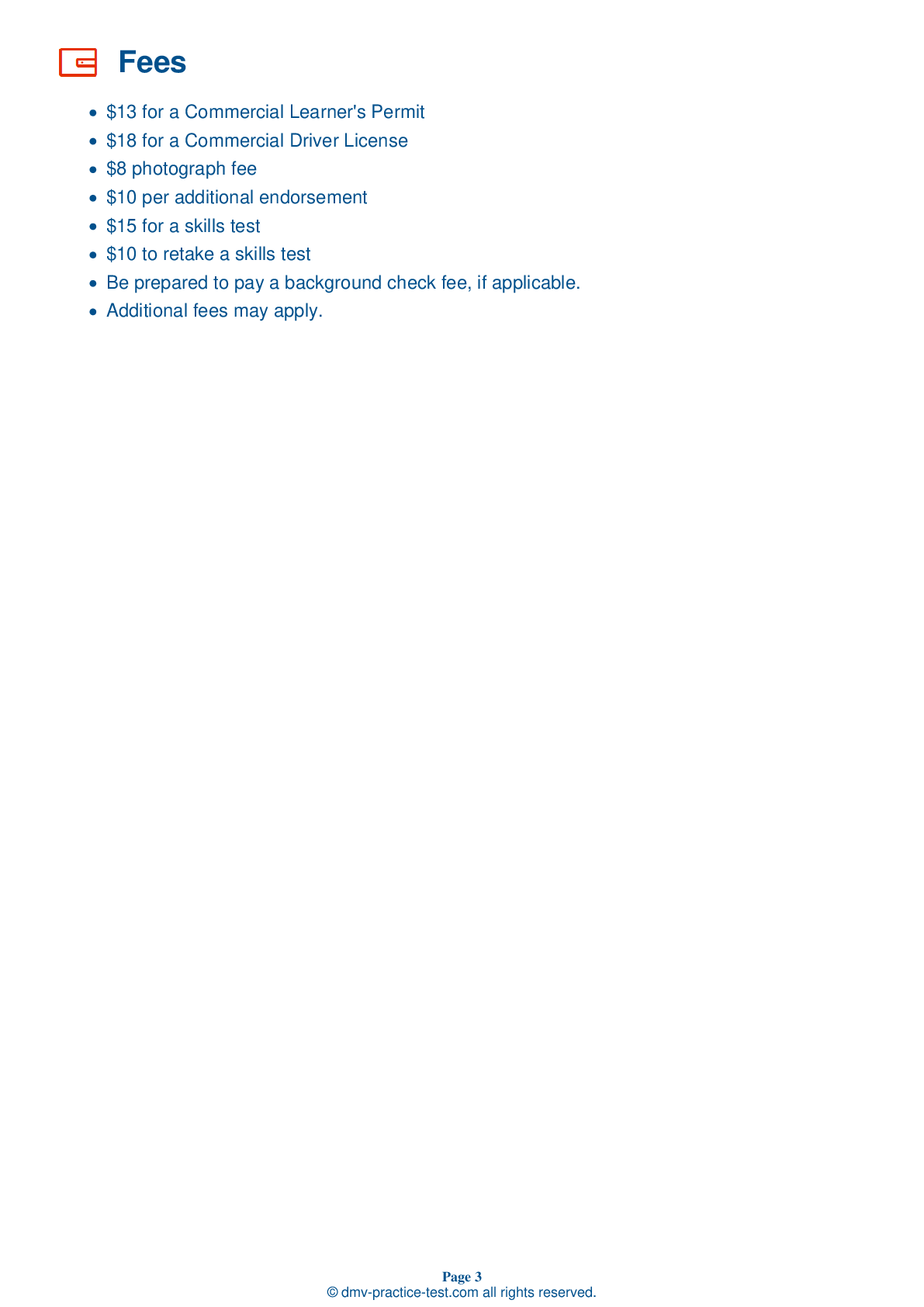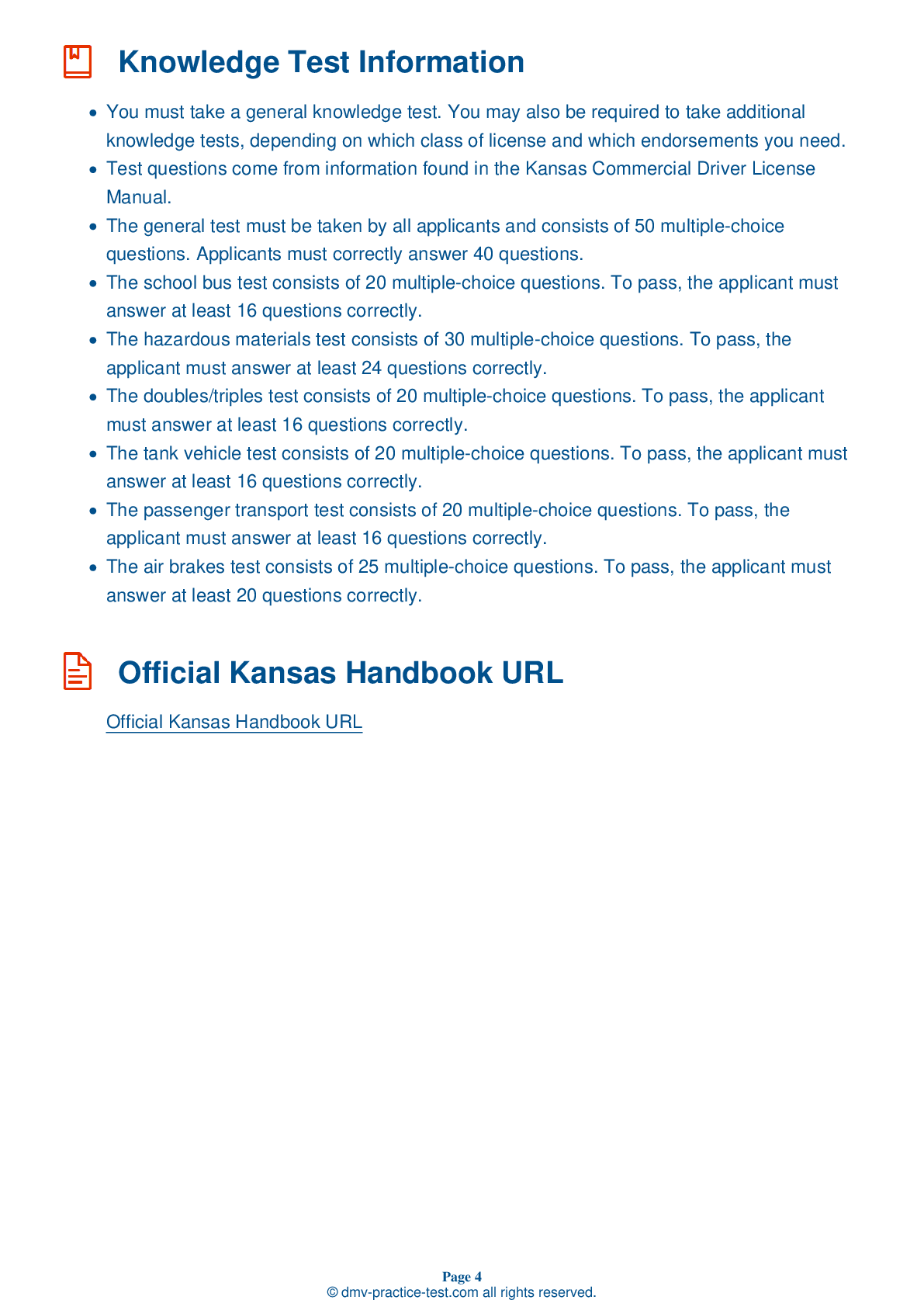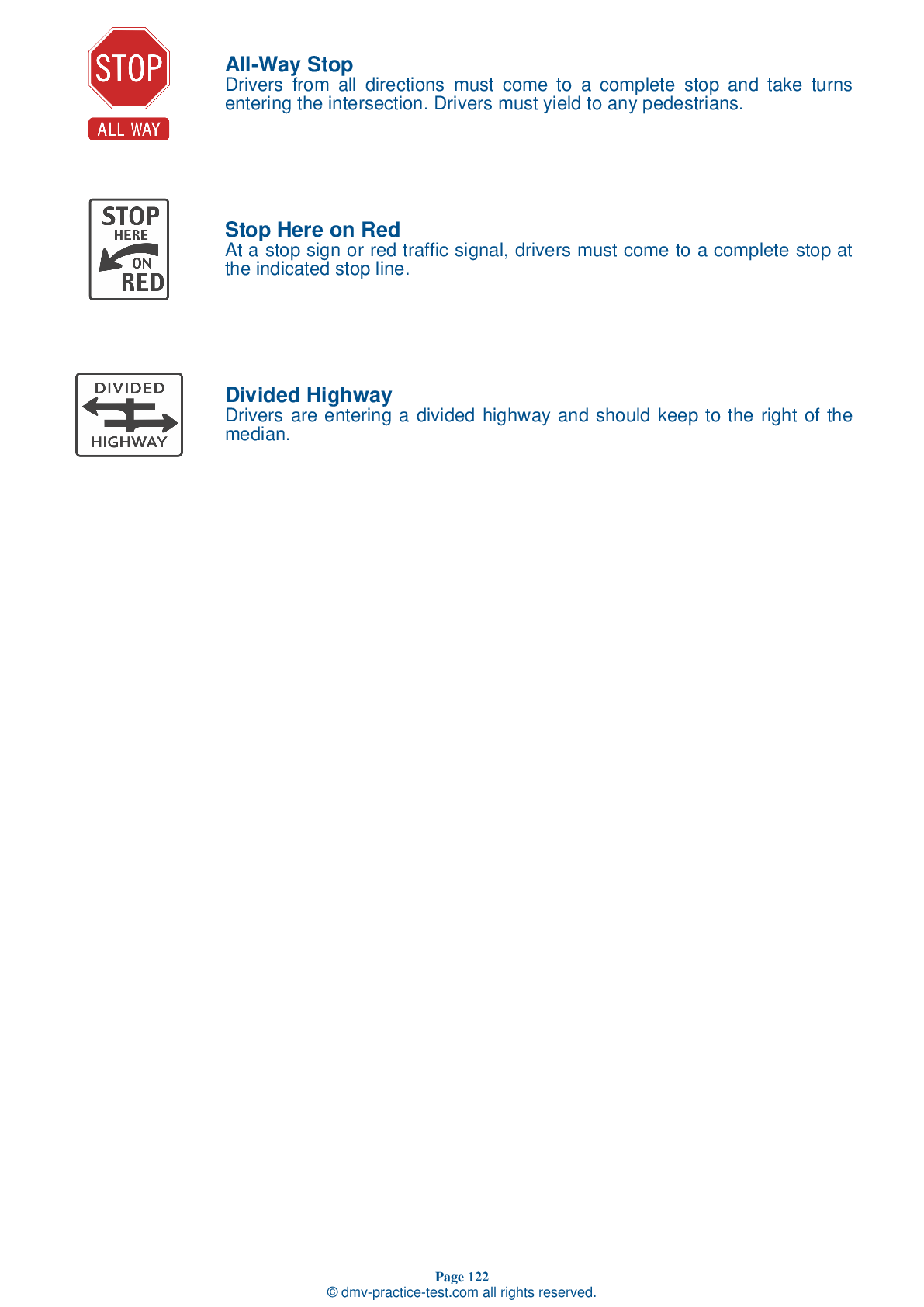HazMat #2
Hazmat Test | Kansas 2025 #2 Page 5 of 5
On our website, we provide FREE practice - CDL hazmat test online! The official exam test consists of several obligatory parts, with all of them checking your knowledge of different blocks of road rules. If you need to obtain a KS CDL hazmat endorsement in 2025, practice as much as possible. Free sample tests published on our website will help you check and improve your knowledge and boost your grades. Please bear in mind that Kansas requirements for issuing a hazmat endorsement for CDL may vary from those established in other states.
30
24
20
25 . Your vehicle's final position should be:
Within two feet of the final position described by the examiner.
You should finish each exercise with your vehicle in the exact position described by the examiner. You can be penalized for failing to complete an exercise exactly in the manner described by the examiner, potentially resulting in failure of the basic control skills test.
26 . Hazardous materials laws are controlled by:
All levels of government.
Because of the risks presented by the nature of the materials, government on federal, state, and local levels may impose regulations on the transportation of hazardous materials.
27 . The front of an enclosed trailer should:
Be free of cracks.
When inspecting an enclosed trailer as a part of the vehicle inspection test, check the front area of the trailer for signs of damage, such as cracks, bulges, or holes.
28 . Shippers must label hazardous materials. If an item is smaller than its label, how should the item be labeled?
The item may be placed in a box displaying a warning label.
Shippers must place diamond-shaped hazard warning labels on most packages of hazardous materials. If the label won't fit on the package, it can be placed on a tag that is securely attached to the package.
29 . When you are seated behind the steering wheel, shipping papers should be:
Taped to the passenger's side window.
When transporting hazardous materials, shipping papers should be kept in a pouch in the driver's side door, or in another location where the driver is able to easily reach them while their seat belt is fastened. The papers must be easily visible to anyone who is entering the cab.
30 . Portable tanks:
Should not be used.
Cargo tanks remain on a vehicle at all times, regardless of whether or not they are carrying cargo. Portable tanks are bulk packaging and are not permanently attached to a vehicle.
2025 Kansas | Frequently Asked Questions
To acquire a CDL Hazmat endorsement in Kansas, you must first have a CDL license. Then, pass the Hazardous Materials Endorsement Knowledge Test. You'll also need to submit fingerprints for a TSA background check. Lastly, complete a Hazmat endorsement application at a Kansas DMV office. Keep in mind, there are fees associated with these processes.
Before obtaining a CDL Hazmat license, you must have a Commercial Driver's License (CDL). You need to be at least 21 years old, be a U.S. citizen or have legal status, and have a clean driving record. You must also pass the Hazardous Materials Endorsement Knowledge Test and successfully complete a TSA background check.
When applying for a CDL Hazmat endorsement, you need to provide your current CDL, proof of U.S. citizenship or legal status (like a birth certificate or green card), and proof of identity and Kansas residency. You'll also need to complete a Hazmat endorsement application and provide fingerprints for a TSA background check.
Yes, there is a dedicated written test for the CDL Hazmat endorsement. The Hazardous Materials Endorsement Knowledge Test covers topics like loading and unloading hazardous materials, bulk packaging marking, driving and parking rules, and emergency response procedures. Passing this test is a requirement for obtaining the endorsement.
The written test for the CDL Hazmat endorsement covers a variety of topics related to transporting hazardous materials. These include: identifying different types of hazardous materials, understanding shipping papers, placarding rules, safety procedures, loading and unloading hazardous materials, and emergency response procedures in case of a hazardous material incident.
Yes, there are extra charges associated with acquiring a CDL Hazmat endorsement. These include a fee for the knowledge test, a fee for the endorsement itself, and a fee for the TSA background check. The exact amounts can vary, so it's best to check with the Kansas Department of Revenue's Division of Vehicles for current fees.
Yes, obtaining a CDL Hazmat endorsement requires a federal background check and security threat assessment. This is done by the Transportation Security Administration (TSA). The process includes fingerprinting and checking for any criminal, immigration, or mental health issues that could pose a security risk. The applicant must also be a U.S. citizen or have legal status in the U.S.
Yes, specialized training is required for the CDL Hazmat endorsement. Applicants must pass a written test covering hazardous materials regulations and safety procedures. After passing the test, applicants must complete a TSA background check. It's not a separate certification, but it is an additional requirement to the general Commercial Driver's License.
No, you cannot legally transport hazardous materials without a valid CDL Hazmat endorsement in Kansas. This endorsement is required by federal law and ensures that drivers have the necessary knowledge and skills to safely transport these potentially dangerous materials. Violating this law could result in serious penalties.
Yes, you can add the Hazmat endorsement to your existing CDL license in Kansas. You don't need to apply for a new CDL license. However, you must pass a written Hazmat knowledge test and undergo a TSA security threat assessment before the endorsement is added to your license.



